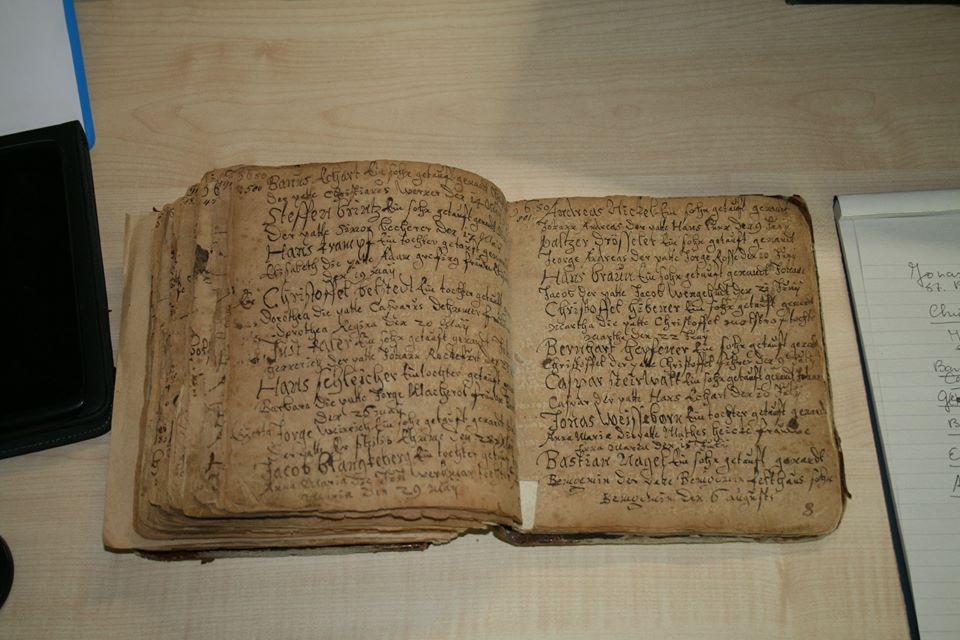35. Reporting on my June 2017 search for Weis(s)enborns: the first morning.
Posted on Facebook on 29 June 2017. In the afternoon of Sunday 18 June I drove from Nordhorn to the village Mihla, where I pitched up my tent near the open air swimming pool, see first picture. I had stayed on this campsite in 2014 and was recognised by the lady of the reception, Heike Kasper. I was well-prepared for her recognition: I offered her a bottle of Weisenborn wine, which she received with a smile. Then I booked for the coming 6 nights. On Monday morning 9:00 'o clock I was greeted and recognised by dr. Steffen Kublik, the archivist of the evangelical church in Mühlhausen. The second picture shows the entrance to the oldest part of the city; the third picture the St. Marien church and the fourth picture the building next to the St. Marien church where the archive is located. As in 2014 I learned a lot from dr. Kublik. For instance: I did not know that family names came into existence in this area of Europe between 1200 and 1350. Before that time the common people had no family names. Furthermore he explained that during the 30 Years War (1618-1648) Thüringen had not suffered anywhere like Hesse-Kassel, the reason being that Thüringen was predominantly Lutheran - followed Luther's teaching - while Hesse-Kassel was Calvinist - following Calvin's teaching -. The Calvinists were hated by all other warring parties and had hence seen the full 30 years of war, while Mühlhausen, the major city in the north-west of Thüringen, had never in its history been sacked, burned or demolished during any occupation. Hence the records of all six churches in Mühlhausen were still completely there, those of the St. Blasius church starting around 1570. The earliest Weißenborn I found in Mühlhausen, in the records of the St. Blasius church, was Jonas Weißenborn, who came from Mihla in 1574, became Gerbermeister = tanner in 1575 and later on Gerberobermeister = chief tanner of the gild. He died in 1628, having had 11 eleven children. Around 1800 he had no more male descendants in Mühlhausen and this branch of Weißenborns hence died out there. The fifth picture shows the comfortable work space I had, with my paper, pens and other belongings. The church books I studied that morning all had very clear handwriting. The sixth picture shows the page of the baptism register with the entry for Jonas' son Sebastian, baptised on 12 October 1580. The seventh picture shows the page of the baptism register with the entry for Jonas' great-grandson Blasius, baptised on 7 December 1645, son of his grandson Jonas. I have put a red rectangle around the entry as it may be hard to find. The eighth picture is a test: how hard is it to recognise the entry for great-granddaughter Anna Maria? After this morning's work I walked down one of the main streets of Mühlhausen, see the ninth picture, and enjoyed a good lunch in preparation for the afternoon in the state archive, two blocks away.








